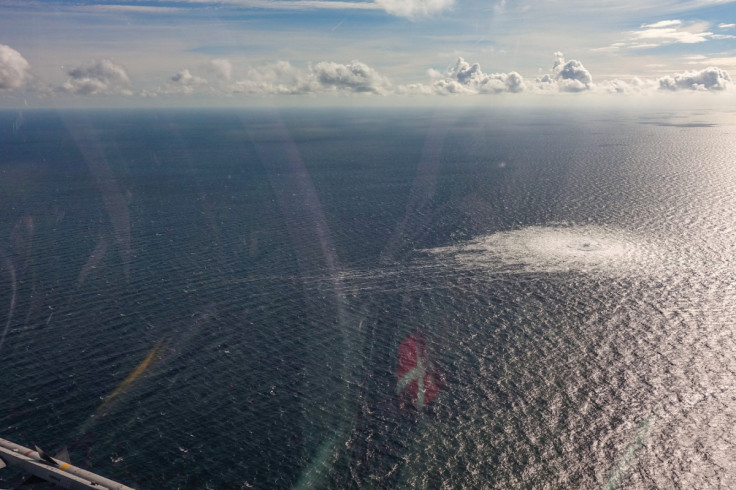What Is Known So Far About The Nord Stream Gas Pipeline Leaks

Unexplained gas leaks detected in the Nord Stream 1 and 2 pipelines from Russia to Germany have prompted investigations by European countries into the cause, including possible sabotage.
Denmark's armed forces on Tuesday released video showing bubbles rushing to the surface of the Baltic Sea above the pipelines, and said the largest gas leak had caused surface disturbance of well over 1 kilometre in diameter.
Here is a breakdown of what is known so far:
WHAT HAPPENED?
The operator of the Nord Stream 2 gas pipeline reported a sudden drop in pressure overnight on Monday, with a spokesperson suggesting there could have been a leak.
This was followed by a Danish Energy Authority statement that a leak had likely occurred in one of the two Nord Stream 2 pipelines lying in Danish waters.
A few hours later, Nord Stream AG, operator of another undersea gas pipeline from Russia to Germany, said it was looking into a drop in pressure in Nord Stream 1.
Sweden's Maritime Authority said on Tuesday it had warned of two leaks on Nord Stream 1 in Swedish and Danish waters.
Each line of the pipeline consists of about 100,000 24-tonne concrete-weight coated steel pipes laid on the seabed. The pipelines have a constant internal diameter of 1.153 metres, according to Nord Stream.
Sections lie at a depth of around 80-110 metres.
WHERE ARE THE LEAKS?
Two leaks were detected on the Nord Stream 1 pipeline, which stopped delivering gas to Europe last month, both in an area northeast of the Danish island of Bornholm.
Danish authorities have asked ships to stay clear by a five nautical mile radius off Bornholm after the leak at Nord Stream 2, which has yet to enter commercial operations. The plan to use it to supply gas was scrapped by Germany days before Russia sent troops into Ukraine in February.
Both pipelines still contain gas under pressure.
WHAT CAUSED THE LEAKS?
It is not yet clear. Analysts and experts say such leaks are very rare and Nord Stream AG has called leaks on three strings of the offshore gas pipelines "unprecedented".
Possible causes range from technical malfunctions, a lack of maintenance or even possibly sabotage.
The Kremlin has said it did not rule out sabotage as a reason behind the damage, adding it was an issue affecting the energy security of the "entire continent".
Poland's prime minister said the leaks were an act of sabotage, while Denmark's leader said it could not be ruled out.
The European Commission said it was premature to speculate.
German Geology Research Centre GFZ said on Tuesday that a seismograph on Bornholm showed spikes at 0003 GMT and 1700 GMT on Monday, when the pressure losses occurred.
WHO IS INVESTIGATING?
For the Nord Stream 2 leak, the head of Denmark's Energy Agency Kristoffer Bottzauw told Reuters said it was too early to say who would conduct the investigations and no-one has been to look at the pipeline yet.
The Swedish Armed Forces, the Coast Guard and the Swedish Maritime Administration and other relevant authorities are taking necessary measures, the Swedish Prime Minister said.
Germany on Monday said it was coordinating a response with police, local officials and the energy agency.
POTENTIAL IMPACT?
Gas leaking from the damaged Nord Stream 2 pipeline in the Baltic Sea will continue for several days and perhaps even a week, the Danish Energy Authority said.
Denmark's armed forces released video showing bubbles rushing to the surface of the Baltic Sea above the Nord Stream 1 and 2 pipelines, and said the largest gas leak had caused surface disturbance of well over 1 kilometre in diameter.
Vessels could lose buoyancy if they enter the area, and there might be a risk of leaked gas igniting over the water and in the air, but there were no risks associated with the leak outside the exclusion zone, it said.
The leak would only affect the environment in the area in which the gas plume in the water column is located and escaping greenhouse gas methane would have a damaging climate impact.
Danish authorities asked that the level of preparedness in Denmark's power and gas sector be raised after the leaks, a step that would require heightened safety procedures for power installations and facilities.
© Copyright Thomson Reuters {{Year}}. All rights reserved.





















